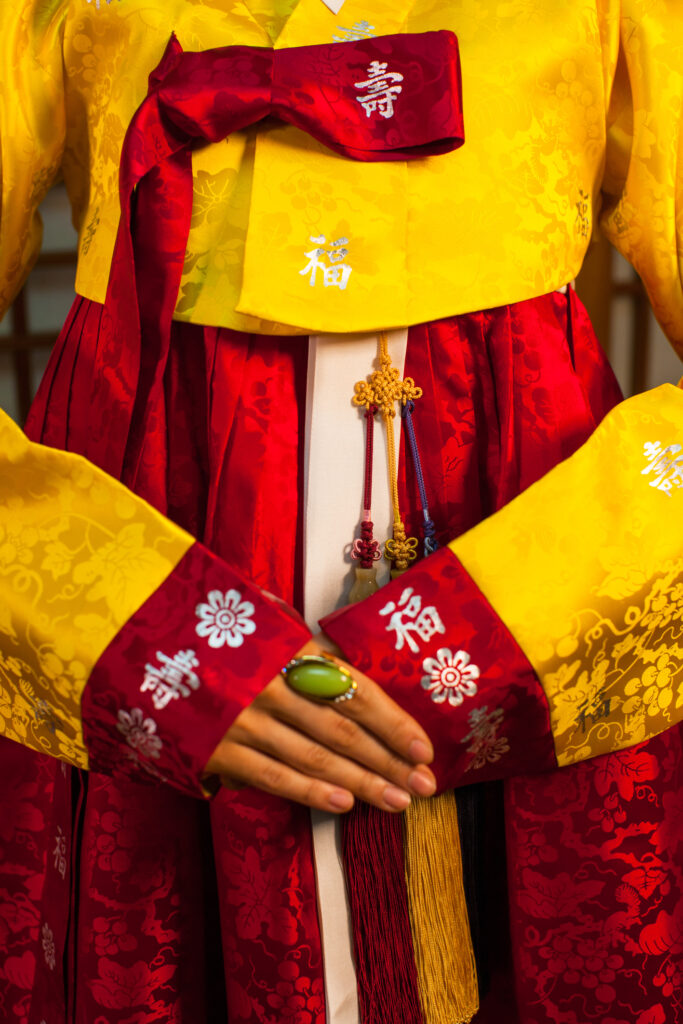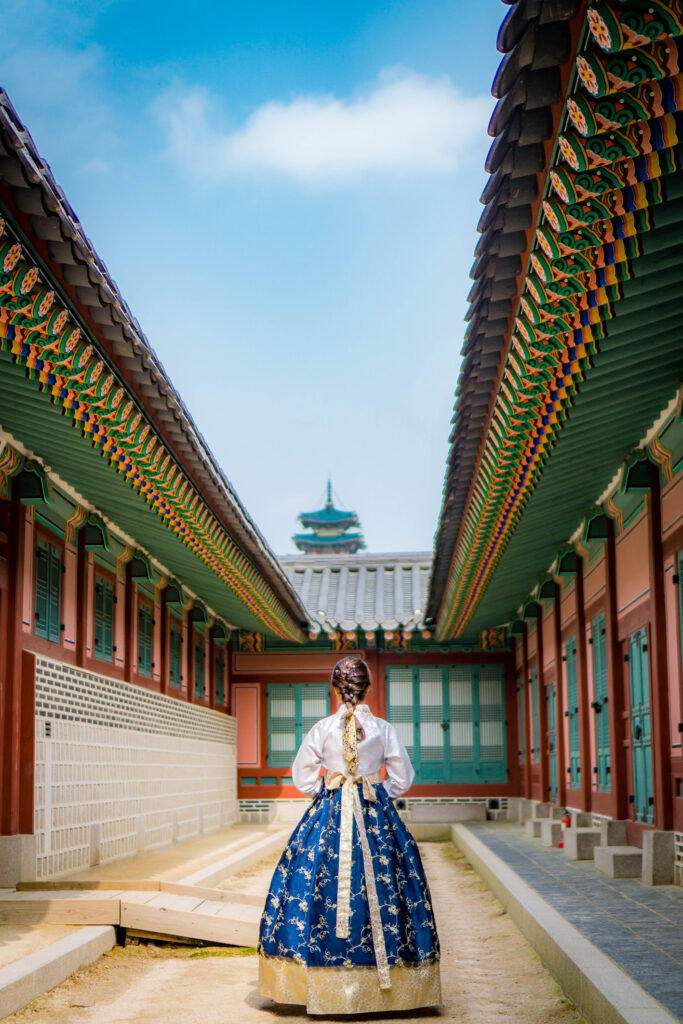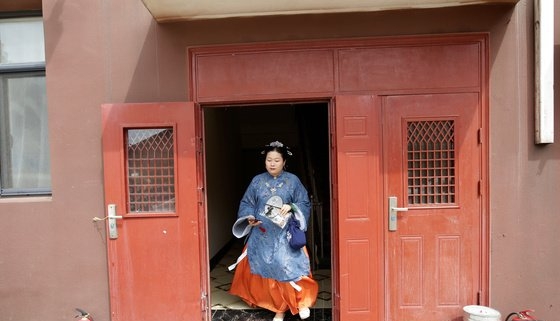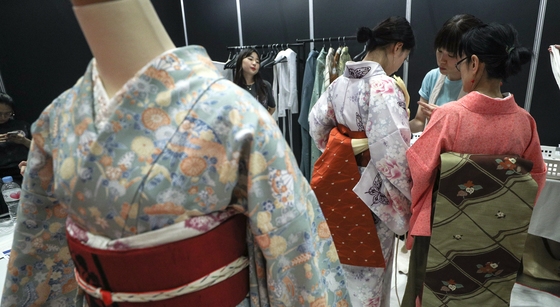Every country has a special tradition that has been rooted deep into the culture for years, even centuries ago. Korea, Japan, and China, countries of East Asia, have traditional clothing styles that tell each country’s history through its fashion. They might look similar at first glance. However, the details of every hem and design along with the hundreds of years of history in each country are what differentiate one from another.

Hanbok is the traditional apparel of Korea that has been around since the era of Goguryeo Kingdom (37 BCE – 668 CE). But the hanbok we know today is the style established during the Chosun era. Traditional hanbok is a two-piece wardrobe – jeogori as a top (which can be compared to a blouse shirt, usually with a V-shaped neckline) and chima (a wrap-around skirt) for women, baji (loose trousers) for men as a bottom. The two-piece component of the apparel is what differentiates it from other apparel such as hanfu and kimono.

The traditional style does not end with clothes. Korea’s style can also be identified through small accessories such as binyeo and norigae. Binyeo is a hair accessory that is used to hold hair up in a bun for married women. It is made up of different materials such as gold, silver, and jade, depending on social class. The royal family member’s bineyo had the shape of a phoenix or a dragon, usually made of gold. Norigae is a hanging tassel accessory with the main trinket and refined colored knots. Women from all classes wore norigae attached to their chima, as a good-luck charm for health and prosperity.
Hanbok was worn as a daily outfit even until the 1960s. Western-style suits took over soon after and hanbok slowly became an item of the past. But hanbok is still worn for traditional holidays and ceremonial weddings today. The style has made its way into today’s pop culture as well, showcased by many K-Pop idols such as BTS, Blackpink, and Mamamoo.

Hanfu is the historic apparel of China, where the term ‘hanfu’ means clothing of the Han people – the ethnic group that makes up the majority of the population in China. Hanfu has been around since more than 3,000 years ago and continuously evolved its style throughout dynasties. It was the most popular and dominant style during the Tang, Ming, and Song dynasties.
Hanfu has uniquely wide loose sleeves and an accent belt sash at the waist of the long skirt, usually in the form of a robe or pleated skirt. Hanfu is also known to have a cross over the Y-shaped neckline from the robe. Since the early 2000s, Hanfu has been getting public recognition in China to revive the ancient tradition. Many have modified the style to the modern fashion trends to be worn daily and like Hanbok, people have started to wear the clothes for big events such as weddings.

Kimono is the official national dress of Japan. The kimono was first introduced to the people of Japan with influence from the Chinese style. But since the Heian period (794 – 1193 CE), Japan quickly adopted its own style according to Japanese culture after ending exports of Chinese goods. Traditional Kimono is made from silk while modern Kimono is usually made from many different fabrics including cotton, wool, etc. for easy care. Kimono consists of several pieces which is why one may need assistance putting it on – usually by licensed kimono dressers.
Kimono consists of multiple styles for different situations. A most famous variation would be yukata which is the summer version of the kimono. Unlike traditional kimono, yukata is made from cotton or linen to escape the summer weather. While the people of Japan only wear kimono during special occasions like weddings or tea ceremonies, it is very popular for tourists to rent or experience kimono.
Cultures often are not bound by their geographic limits depending on the borders of a nation-state because cultures overlap and mix as international relations develop – including trade and national commerce. While it is true that in the past times, neighboring countries such as China, Korea, and Japan were all influenced by each other – from language to clothing- the end products of culture are all unique, different, and representative of their own mother country. We need to celebrate each of our country’s cultures in its honor – just as other countries’ should be respected as much as our own.
Jenny Hwang
Asia Journal
(Los Angeles Times Advertising Supplement)

